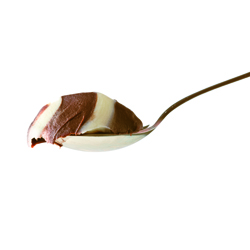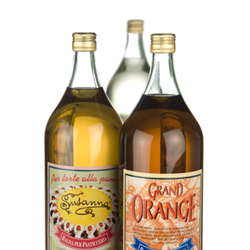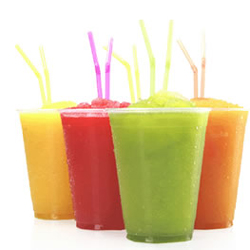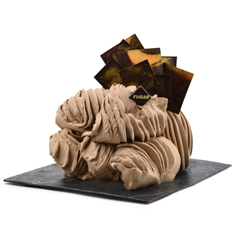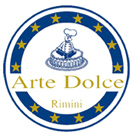Genetically Modified Organisms (GMO)
EC Regulation 1829/2003 and 1830/2003, in force since 19/04/2004, rule the use of genetically modified raw materials - defined GMO - and oblige all producers of foodstuffs to declare on the label the possible presence of genetically modified organisms and in particular specifies that:
"all ingredients, additives and flavours produced starting from GMO,
are subject to the obligation of GMO labelling".
 Fugar Produzione Spa, with great satisfaction, underlines that all its productions are GMO free and that it can supply absolute guarantees to all our Customers, having formal declaration by part of its suppliers which declare the NOT PROVENANCE by genetically modified organisms.
Fugar Produzione Spa, with great satisfaction, underlines that all its productions are GMO free and that it can supply absolute guarantees to all our Customers, having formal declaration by part of its suppliers which declare the NOT PROVENANCE by genetically modified organisms.
Fugar highlights that the labels of all its production of compound ingredients do not mention the words GMO and therefore means that all Fugar production not foresee the use of raw materials from genetically modified organisms.
This guarantee is also provided to all customers through a specific declaration shown on the technical sheets of all references marked Fugar, which are attached to each invoice.
Most people can eat a wide variety of foods without any problems. For a small percentage of individuals, however, certain foods or food components may cause adverse reactions, from a slight rash to a severe allergic response.
Negative reactions to food can be caused by food allergy or food intolerance.
What is the difference between allergies and food intolerances? The negative reaction to food is often wrongly defined food allergy. In many cases it is caused by other causes such as microbial type of food poisoning, psychological aversion to food or intolerance to a particular ingredient in a food.
The negative reaction to food is often wrongly defined food allergy. In many cases it is caused by other causes such as microbial type of food poisoning, psychological aversion to food or intolerance to a particular ingredient in a food.
Food allergy is a specific form of intolerance to food or food components that activates the immune system.
An allergen ( a protein at risk present into that food, that for the majority of people is
completely harmless) triggers a chain reaction on the immune system including the production of antibodies.
Food intolerance involves metabolism but not the immune system. A typical example is lactose intolerance: people who are affected have a deficiency of lactase, the digestive enzyme that breaks down the milk sugar.
ALLERGIES Usually, the immune system protects the body from harmful foreign proteins unleashing a reaction to eliminate them. Allergy is essentially "an immune alteration" in which a normally harmless substance is "perceived" as a threat - an allergen - and attacked by the immune defenses.
Usually, the immune system protects the body from harmful foreign proteins unleashing a reaction to eliminate them. Allergy is essentially "an immune alteration" in which a normally harmless substance is "perceived" as a threat - an allergen - and attacked by the immune defenses.
Symptoms of reactions to food allergies
Respirators
Runny nose or nasal congestion - Sneezing - Asthma (breathing difficulty) - Cough - Shortness of breath, wheezing.
Skin
Swelling of lips, mouth, tongue, face and / or throat - Hives- Rash or redness - Itch - Eczema.
Gastrointestinal
Abdominal cramps - Diarrhea - Nausea - Vomit - Colic - Swelling.
Systemic
Anaphylactic shock (severe generalized shock)
What is the incidence of food allergies? The true incidence is indicated only by a few studies, with confirmation of the allergic reaction through a double-blind clinical trial (eating alternatively food or a placebo, in a form not recognizable, without which neither the patient nor the doctor know the sequence administration).
The true incidence is indicated only by a few studies, with confirmation of the allergic reaction through a double-blind clinical trial (eating alternatively food or a placebo, in a form not recognizable, without which neither the patient nor the doctor know the sequence administration).
What foods are most commonly cause of food allergies?
Although allergic reactions can occur with any food or food component, in some the chances to cause allergies are higher. Among the most common food allergens there are cow's milk, eggs, soy, wheat, shellfish, fruit, peanuts and nuts.
What does FUGAR for YOU?
Send with every purchase the technical sheets relatives to references where you can find information about the product and the certain or accidental presence of allergens.
FOOD INTOLLERANCES
Intolerance can cause allergy-like symptoms (including nausea, diarrhea and stomach cramps), but the reaction does not involve in the same way the immune system. Food intolerance occurs when the body cannot properly digest a food or food component. While the subjects truly allergic must eliminate in full the offending food, people who have an intolerance can often tolerate small quantity of food or component without developing symptoms. Exceptions are individuals sensitive to gluten and sulfite.
Which are the most common causes of food intolerance?
I The two most common responsible for food intolerance are Lactose and Gluten.
In order to guarantee a complete formation and give You the most quantity of updated information, we kindly ask You to visit the following web-site, where You should find useful news about health and food safety :
European Food Safety Authority (EFSA) - is the official public health portal of the European Union
EUROPA - Food Safety - Rapid Alert System for Food and Feed - (RASFF)
Object: EC Regulation n.1333/2008 – "Food additives"
Dear Customer A.MI.CO. Fugar,
we hereby inform you that is entered into force EC Regulation n.1333/2008 relative to food additives, which states that from the 20th of July 2010 for food containing the following colorings: E-102 Tartrazina (color yellow tartrazina); E-104 Quinoline Yellow (color yellow); E-110 Sunset Yellow (color sunset yellow); E-122 Carmoisine (color strawberry red); E-120 Ponceau 4R (brilliant red); E-129 Allura Red (red) is required to put on label the additional information “may have an adverse effect on activity and attention in children”.
That decision has been made following scientific evidences about possible risks of intolerances/allergies and behavioral changes in children, although these colorings continue to be allowed by national and European legislation.
However, food already on the market or labeled before that date may be commercialized until their minimum durability date (best before) or expiry date (Articles 24, 31 and Annex V of EC Regulation No. 1333/2008).
Fugar, always attentive to the quality and safety of consumers, first of all children, has decided not to use such dyes in favour of natural colours.
In this regard, we advise that the natural dyes have specific “contraindications”, such as:
- very different tone than the artificial colours,
- darker colours, opaque and less bright,
- durability significantly lower,
- possible discoloration over time,
- higher costs of 500%
The decision not to use these dyes did not involve just a trivially simple non-use, but a research and development lasted several months: it is clear that renounce the use of these dyes in our products for which consumers are accustomed to have a “more lively” reference made it necessary to seek alternatives that combine the non-use of these dyes with a product equally pleasant to the eye and as close as possible to the previous year.
A “natural” choice conscious and consistent with our business principles, certain that it is shared and appreciated by all our customers.
We encourage you to pay attention to the labels of all compound ingredients and raw materials that You will use from 20th of July 2010 seeing that You will be required to inform the final consumer of the eventual presence of these dyes, showing them on ingredients panel with the additional information “may have an adverse effect on activity and attention in children”.






